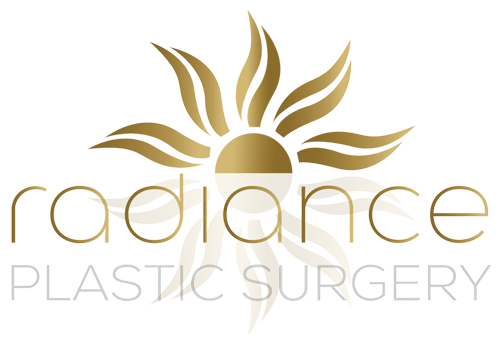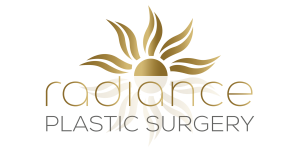After undergoing breast implant surgery, adhering to postoperative care instructions, which often include massaging the implants, is crucial for optimal results. Massaging breast implants is typically recommended to prevent the hardening of the surrounding capsule, a condition known as capsular contracture. It is vital to understand that while breast massages can be beneficial, they should always be performed as instructed by your healthcare provider to mitigate any risks associated with improper technique.
Neglecting to massage breast implants, as advised by your surgeon, can lead to complications that may impact the aesthetics and feel of the breast implants. It can also potentially contribute to discomfort or changes in the breast’s appearance. Therefore, the importance of following your surgeon’s guidance on breast massage should not be underestimated. Regular monitoring and longer-term care are essential components of maintaining the health and appearance of breast implants.
Key Takeaways
- Massaging breast implants can help prevent capsular contracture.
- Failing to follow massage guidelines may lead to complications.
- Consistent postoperative care is crucial for long-term results.
Importance of Massaging Breast Implants
When you undergo breast augmentation, post-operative care is crucial for optimal results. Massaging your breast implants is an integral part of this process. It’s designed to prevent the formation of hard capsule around the implant, known as capsular contracture.
Why Massage Breast Implants?
- Prevent Capsular Contracture: Regular massage helps maintain the softness of the breast tissue and can decrease the risk of capsular contracture, a condition where the tissue around the implant hardens.
- Improve Comfort: Massaging may alleviate discomfort and assist in the settling of implants into their proper position.
- Enhance Healing: By promoting circulation, massages aid in healing by reducing swelling and facilitating the resolution of bruises.
Massage Techniques
- Compression: Gently squeeze the implant, pushing it towards the edges of the breast pocket.
- Displacement: Move the implant up and down, side to side, and in circular motions within the breast pocket.
Frequency and Duration
| Stage | Frequency | Duration |
| Early post-operative | Several times a day | 5 minutes per session |
| Long-term maintenance | Weekly | As needed |
It is crucial to receive proper instructions from your surgeon on how to perform these massages effectively. While information about massaging the reconstructed breast to prevent complications has been underscored in literature, it is equally essential for those with cosmetic breast implants.
Remember, the proper technique and consistency are essential. If you have concerns about massaging your breast implants or experience any pain or abnormalities during the process, it is imperative to consult with your surgeon immediately for personalized advice.
Consequences of Neglecting Massage
Post-operative care following breast augmentation includes specific instructions to ensure optimal recovery and results. One critical aspect of this care is the regular massage of breast implants, a procedure recommended to prevent complications and maintain the desired aesthetic effect.
Capsular Contracture Risk
When breast implants are not regularly massaged, you may be exposed to an increased risk of capsular contracture. This condition occurs when the fibrous capsule that naturally forms around the implant tightens, causing the breast to feel hard and potentially resulting in discomfort and an unnatural appearance. Massage can help maintain the softness of the capsule and promote a more natural movement of the implant within the breast pocket.
Implant Displacement Concerns
Implant displacement can also arise from neglecting post-operative massage. Proper massage techniques encourage the implant to settle in the correct position. In contrast, the absence of massage might lead to shifting or rotation of the implant, causing asymmetry and necessitating potential surgical correction.
Aesthetic Outcomes
Ultimately, the aesthetic outcomes of breast augmentation can be negatively impacted if massage is neglected. Regular massage contributes to maintaining a natural shape, preventing visible rippling, and ensuring the overall softness of the breast; without it, implants may appear more pronounced or artificial.
Postoperative Care Instructions
Proper postoperative care is essential for the optimal integration and longevity of your breast implants. It is crucial to adhere to your surgeon’s recommendations concerning massage techniques and schedule to minimize complications and enhance your recovery.
Massage Techniques
After receiving breast implants, specific massage techniques are advisable to reduce the risk of capsular contracture, where the scar tissue hardens around the implant. Utilize a gentle yet firm approach to:
- Displace the implant gently within the breast pocket, promoting softness and movement.
- Soften and stretch the skin and tissues to accommodate the implant properly.
Schedule and Frequency
The schedule and frequency of breast implant massages are individualized, but general guidelines recommend:
- Beginning massages 24 to 48 hours post-surgery unless otherwise directed by your surgeon.
- Continuing daily massages for the first few months, gradually decreasing the frequency as advised.
Monitoring and Long-Term Care
After receiving breast implants, you must engage in regular monitoring and long-term care to ensure the health and optimal appearance of your augmentation results. Your plastic surgeon will provide detailed post-operative instructions that should be meticulously followed.
Post-Surgery Monitoring:
- During the initial recovery period, it is crucial to monitor for signs of complication, such as unusual swelling, redness, and fever, which may indicate infection.
- Observation is also necessary for detecting the potential development of capsular contracture, a condition where the scar tissue hardens around the implant.
Long-Term Care Considerations:
- Breast Massage: Regularly massaging breast implants can help maintain their softness and decrease the risk of capsular contracture. Your surgeon will teach you the appropriate techniques to apply.
- Self-Exams: Familiarize yourself with the feel of your implants so that you can detect any changes promptly.
- Mammography: Ensure you inform the technician that you have breast implants so they can use special techniques to achieve the most accurate imaging.
Professional Follow-Ups:
- Annual Examinations: Even if you are not experiencing any issues, you should have your breast implants checked annually by your plastic surgeon.
- MRI Scans: The current recommendation for silicone implants is to have an MRI scan three years after insertion and every two years after that to detect silent rupture.
Neglecting proper breast implant massage and follow-up care may lead to complications that could necessitate additional surgery. Therefore, adherence to these guidelines is a matter of health and aesthetics. To assert the best practices in maintaining the integrity of your implants, it is advisable to keep a close relationship with your plastic surgeon for advice tailored to your specific circumstances.

